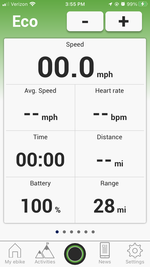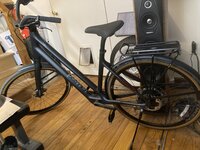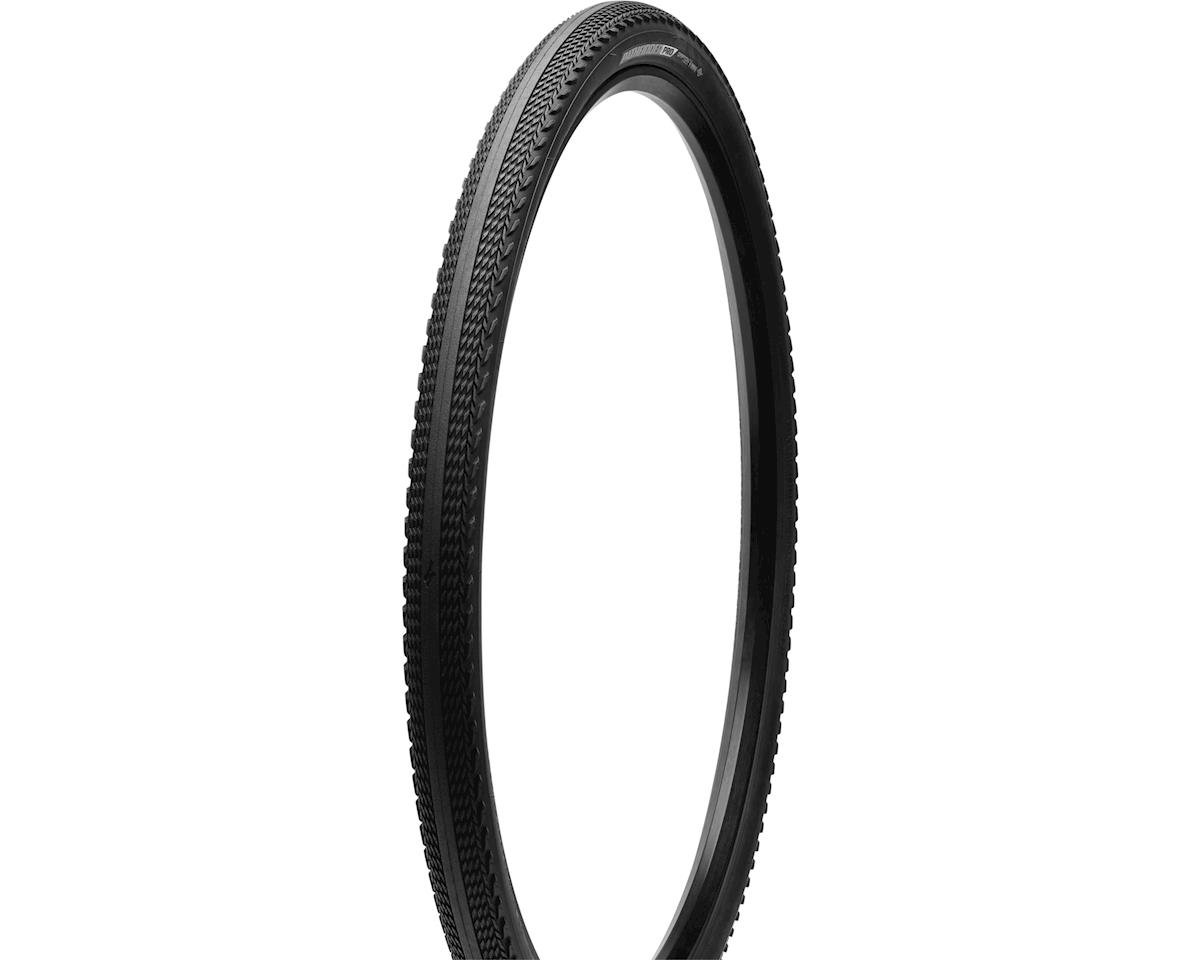Wasn’t sure exactly where to post this since there isn’t a dedicated Lemond forum. Anyway, hoping for some input:
I bought a Vintage Electric Cafe bike a few months ago and really enjoy it. I wanted to get a second e-bike both just ‘cause, but also because, due to some pre-arthritis in one hip and sciatica on the opposite side, I wanted to have a step-thru bike available for days when either condition flares up.
So: I bought a LeMond Dutch both for the step-thru design and light weight. Here are my questions:
1. The LeMond has the Mahle system, which can be interfaced with via the MySmartBike app. Among other things, the app shows the estimated range. The advertised range for the LeMond Dutch is 40-70 miles at 100% charge; the app shows an estimated range of only 28 miles at 100% charge (screenshot attached), which is *way* below even the low end of the advertised figures. I contacted LeMond and they said not to worry about it, and the app is inaccurate. That’s not very comforting: I have no way of knowing whether that’s actually the case (and certainly won’t be able to methodologically test it to verify before the 14 day return period expires). But even if it is true, it’s still not very comforting: it would be like driving a car with a defective fuel gauge and all of the associated range anxiety. So: anyone with this bike (or with this Mahle/MySmartBike system and app on another bike) have any experience regarding this issue of the range estimated by the app being so far below the advertised range?
2. The Dutch comes with Panaracer tires. Any experience/opinions regarding these? It’s my first time riding on thin slick-looking tires like this: I am used to knobbier and wider tires like the Schwalbe Smart Sam tires on my Vintage Electric bike. I’ve only gone on one test ride on the Dutch so far, but the tires feel less stable and grippy to me, whether because of the rather thin width, lack of knobby grip, or both. But that could be totally psychosomatic on my part: anyone have experience with these tires?
Thanks for any input!
I bought a Vintage Electric Cafe bike a few months ago and really enjoy it. I wanted to get a second e-bike both just ‘cause, but also because, due to some pre-arthritis in one hip and sciatica on the opposite side, I wanted to have a step-thru bike available for days when either condition flares up.
So: I bought a LeMond Dutch both for the step-thru design and light weight. Here are my questions:
1. The LeMond has the Mahle system, which can be interfaced with via the MySmartBike app. Among other things, the app shows the estimated range. The advertised range for the LeMond Dutch is 40-70 miles at 100% charge; the app shows an estimated range of only 28 miles at 100% charge (screenshot attached), which is *way* below even the low end of the advertised figures. I contacted LeMond and they said not to worry about it, and the app is inaccurate. That’s not very comforting: I have no way of knowing whether that’s actually the case (and certainly won’t be able to methodologically test it to verify before the 14 day return period expires). But even if it is true, it’s still not very comforting: it would be like driving a car with a defective fuel gauge and all of the associated range anxiety. So: anyone with this bike (or with this Mahle/MySmartBike system and app on another bike) have any experience regarding this issue of the range estimated by the app being so far below the advertised range?
2. The Dutch comes with Panaracer tires. Any experience/opinions regarding these? It’s my first time riding on thin slick-looking tires like this: I am used to knobbier and wider tires like the Schwalbe Smart Sam tires on my Vintage Electric bike. I’ve only gone on one test ride on the Dutch so far, but the tires feel less stable and grippy to me, whether because of the rather thin width, lack of knobby grip, or both. But that could be totally psychosomatic on my part: anyone have experience with these tires?
Thanks for any input!





